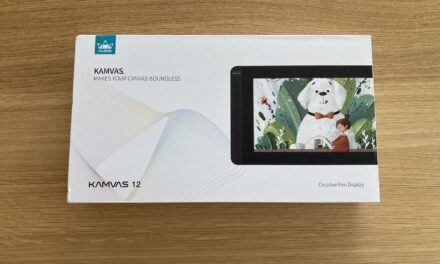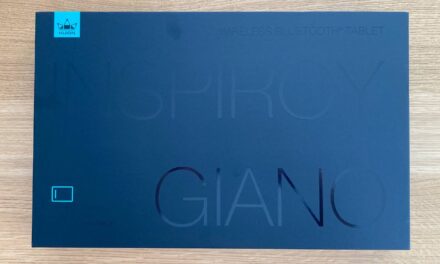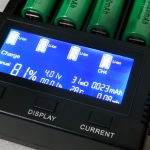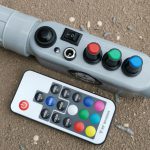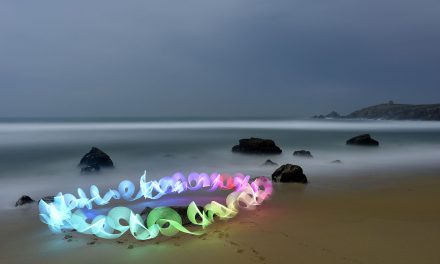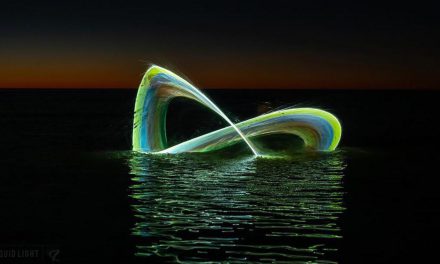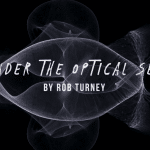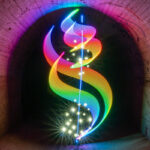
LightGraff - The first Light Painting Book
LightGraff - The first Light Painting Book
Back in 2007, the world saw the first book dedicated to LightPainting. The publication came in life with the efforts of the French artists Guillaume J. Plisson and Rezine, collaborating with some more light artists. Guillaume was kind enough to answer some questions and tell us more about this inspirational piece of work.
When and how did you start with light painting?
I began to photograph with a certain rigour in the 90s and quickly was particularly interested in night photography. I always carried a tripod and has not stopped since. At first, I designed with urban lighting, car headlights… mainly in negative colour then quickly moved to positive (slides), in order to refine my expertise in this type of shots. As a teenager, my image culture was strongly influenced by comics and particularly “Akira”, which played an important role in my interest for night photography: the bursts of motorcycles that left light traces from their paths, that traumatised me 😉 From there I started the night photography. Calligraphy and mainly Hassan Massoudy were also part of my graphic interests, just as graffiti and tags were part of my everyday world. Rapidly, I began to draw with light sources in front of the lens and instantly caught the bug.
Hassan Massoudy
How did you get the idea of a publication about light painting/graff?
In 1996, I decided to make photography my job. I was fascinated by the press and reporting, so I oriented my eye and my learning towards photojournalism. I obtained the press card in 1999, collaborating with different newspapers, magazines and agencies. I have always considered photography as a good way to meet each other and satisfy my curiosity or deepen my interests. In 2004, I equipped myself with digital equipment. I was always looking for reporting ideas, after working on assisted suicide, therapeutic cannabis, illegal immigration… I wanted to make less journalistic images, without constraints. And one night that year, the idea came to me, while I amused myself at home drawing in the dark with a Maglite flashlight, to contact graffiti artists and propose a collaboration to put together a book devoted exclusively for images made at night, with long exposure time, during which they would draw in space, with lights, instead of spray cans. To me, the idea seemed symbolically magic, innovative and driven to carry out this project that I contacted graffiti artists from my city (Lyon, France) to present the project.
I first proposed the idea to Brusk, whose work I already loved, but he did not respond. We met up a few years later and travelled a lot of illuminated paths together…
How long did you work on this? Who participated?
The project of the book “Lightgraff” was born with Rézine, in 2005. We were going out several times a week. The nocturnal sessions were rich and intense. We laid the foundations of the lightgraff. We thought we were the first ones to do this type of image, in search for quality. We were testing all kinds of lights. Rézine could adapt to every environment and brought in his own ideas, the project was progressing well. Shooting the images one after another, sometimes repeating them dozens of times to get the right one, patiently, because we did not want to edit them and use Photoshop. The idea was to enter the tradition of calligraphy where as long as the result is not good, we start again. This quest for demand led me to make certain images of the book in Ektachrome, using a Pentax 67. I never stopped using film but digital has many advantages for lightgraff, especially the instant rendering of the image, that facilitates the creative process. Because our images were thought ’in situ’ with Rézine and often required a lot of tests. We started with the images, then we would decide to change the colours of the lines, their placements… Everything was done in a very empirical way until we obtain balanced and satisfying compositions for us. For about two years, we moved forward together with Rézine.
Rezine
Rezine

Rezine
For the last chapter of the book, I wanted to open the discussion with images made with other artists, in a spirit of ‘battle’ that matched that of the book.
I then contacted Marko93 and Hassan Massoudy who positively welcomed the project. We shared our lights, it was magic.
While browsing the web, I came across the calligraphy on paper by Julien Breton. I really enjoyed his work and invited him to contribute to the book, after having initiated him to lightgraff. With Rézine, we had already tested many sources of lights and experimented with a lot of things… it became easy to transmit the basics.

Photographie: Guillaume J. Plisson / Libre arbitre
LightGraff: Julien Breton
“Le savoir lve celui qui ne possde rien” Khalil Gibran. Bord de Loire, aot 2007.
Photographie: Guillaume J. Plisson / Libre arbitre
LightGraff: Julien Breton
The last protagonist to have played a role in the book was a Swiss graffiti friend of Rézine: Deter.
When the book started to be concrete, I contacted a first publisher to explain the project. I needed a title and “Lightgraff” sounded good. The publisher found the term relevant, it took off from there. But it did not happen with him. So I contacted Olivier Jacquet, publishing director and chief editor of “Graff it!“, a magazine dedicated to graffiti in France since 1994, who immediately joined the project. He validated the technical aspects and offered me two pages in each issue of his quarterly “Graff it!” to make known the practice and launch the book. I took charge of this section for two years, from January 2007 to February 2009.
The idea was to publish a beautiful object, in large format 30x30cm, with selected varnish on the cover and the 4th one with sewn sheets and a large space for the image. That is what we did. The book has been sold out for several years but can be consulted in many libraries in France. And who knows, a new edition might see another day… For some time, I am thinking of a new book, it has matured slowly but I got it, I found the topic!

All these artistic encounters and creative moments were strong and convinced me of the interest of this illuminated research. But above all, we had a lot of fun. All these images were made with the greatest rigour and implication but concretely, we went looking for spots, we tested graphic renderings with all kinds of light sources, we experimented everything that went through our heads, it was cool and exciting!
What was the response from the lp world at the time?
In 2006, the images created with Rézine were awarded by the Bourse du Talent from www.photographie.com, which helped to make them known, as well as many publications in the international press (Graff it! Magazine, Ca m’ interesse, Muy Interessante in Spain, Focus in Italy …) and also Gobelins, Ecole de l’image where Didier Pilon, being director of a continuous training program, offered me to be involved live, for their first participation in the White Night of Paris, with Rézine, Marko93, Breton and Shamsham.
nuit.blanche2007
It was in 2006 that I discovered the images of Parisian Marko93, PikaPika (aka NAGATA Takeshi and MONNO Kazue) in Japan and JanLeonardo Woellert and Joerg Miedza (LAPP) in Germany. We were the only light painters, with Gildas Malassinet-Tannou in Toulouse (France) who was also one of the first practitioners of light. At that time, search engines on the web showed no response to the terms “light painting”. It was not until later, when I was writing texts for the book, that I discovered the images of Gjon Mili with Pablo Picasso and, later, that of Man Ray, Georges Mathieu … in fact there were many other artists but without being an art historian, I did not know about it.
In 2007, when this book was published, the world of light painting did not exist yet. We were just a handful across the globe to use light to paint. Things have changed a lot since then. I am delighted and I hope I have contributed to the development of Light painting. My intention has always been to share, to popularise on a large scale and to make this practice accessible. I used my expertise. Others took care to make the tutorials, the videos … the staging and the social networks, it was never my strong suit 😉
the cover
Light is a strong symbol, which has always conveyed a lot of symbolism and over the years, it became an ally, a form of expression, a true passion. It is capricious, sometimes untameable but so beautiful when it allows to prolong the soul and to resonate with the place where it expresses itself. From the abundance of approaches and expertise, the world proves that light has not yet finished to surprise us and constantly pushes the field of possibilities, as I wrote in this book “Lightgraff”, published in November 2007 at Graff-it! Editions.

Rezine
Any final words?
Thank you for your blog that contributes to the rise of light and for this article that gives me the opportunity to thank Rézine and all those who follow the evolution of this research for more than ten years now. I never imagined that this twisted idea would take such a place in my life.
Big up to all! And as Marko says: “In Light we trust”.
Guillaume J. Plisson / Lightgraff
http://www.lightgraff.org
https://www.instagram.com/lightgraff/
All pictures are © Guillaume J. Plisson / Lightgraff, sometimes done with artists witch names are in the captions.

